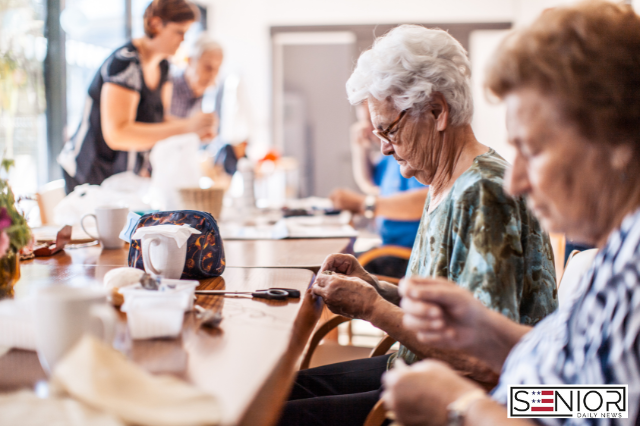The Butterfly Approach: A Compassionate Model for Dementia Care

Caring for a loved one with dementia is one of the most challenging yet meaningful experiences families and caregivers face. Dementia changes not only memory and behavior but also how a person experiences daily life. Traditional care models often focus heavily on medical needs, sometimes overlooking the emotional and social well-being of the individual. This is where the Butterfly Approach comes in—a unique and compassionate model of dementia care that places people, not their conditions, at the center of support. Rooted in empathy, respect, and emotional connection, the Butterfly Approach is transforming how senior care communities in the United States and beyond treat individuals living with dementia.
What Is the Butterfly Approach?
The Butterfly Approach is a dementia care philosophy created by Dr. David Sheard, founder of Dementia Care Matters in the United Kingdom. Unlike traditional medical models, the Butterfly Approach emphasizes emotional well-being and meaningful engagement. It acknowledges that while memory and cognitive abilities decline, emotions remain intact and can be a powerful pathway to connection. The term “butterfly” reflects the light, gentle, and person-centered way caregivers should interact—focusing on moments of joy, dignity, and compassion. In practice, this model encourages caregivers to engage residents in real-life, everyday activities that bring comfort and familiarity, rather than relying solely on routines or clinical care.
Core Principles of the Butterfly Approach
The Butterfly Approach is guided by a few core principles that help reshape dementia care:
- Feelings Matter Most – The model recognizes that emotions continue to thrive even when memory fades. Caregivers focus on creating positive feelings rather than correcting or challenging confusion.
- Person-Centered Care – Each individual is valued as a unique person with a lifetime of experiences, hobbies, and stories. The Butterfly Approach prioritizes personal identity rather than viewing dementia as the defining trait.
- Living in the Moment – Instead of emphasizing what someone can no longer do, the Butterfly Approach highlights the importance of enjoying each moment, whether that means singing, gardening, or simply holding hands.
- Household Model – Care environments are redesigned to feel warm, homelike, and colorful. The goal is to move away from institutional settings and create spaces where seniors feel safe, comfortable, and loved.
- Meaningful Engagement – Residents are encouraged to participate in daily life activities—folding laundry, preparing food, or sharing stories—helping them maintain dignity and a sense of purpose.
How the Butterfly Approach Differs from Traditional Care
Traditional dementia care often prioritizes efficiency, routines, and medical treatment. While those are important, they can unintentionally leave individuals feeling isolated or overlooked. The Butterfly Approach, in contrast, places emotional connection at the center. Instead of focusing only on tasks such as bathing, feeding, or medication management, caregivers are trained to slow down and interact with empathy. A smile, a kind word, or shared laughter is valued just as much as clinical duties. This shift in perspective not only improves the quality of life for those living with dementia but also reduces caregiver stress and burnout.
Benefits of the Butterfly Approach for Seniors
Implementing the Butterfly Approach can lead to remarkable improvements in the lives of seniors with dementia:
- Enhanced Emotional Well-Being – When caregivers focus on feelings, residents feel more secure, understood, and valued.
- Reduced Anxiety and Agitation – Creating familiar, homelike environments helps reduce confusion and distress.
- Stronger Connections – Daily engagement in meaningful activities fosters stronger bonds between caregivers and residents.
- Improved Quality of Life – Joy, laughter, and shared experiences become a normal part of the day rather than rare occurrences.
- Empowerment – Encouraging seniors to contribute in small ways helps restore dignity and purpose.
Real-Life Examples of the Butterfly Approach
Across the United States, many memory care facilities are beginning to incorporate aspects of the Butterfly Approach. For instance, some communities redesign living spaces with bright colors, personal items, and themed rooms to create a sense of home. Instead of long hallways and sterile walls, residents see familiar photos, cozy furniture, and areas that invite conversation. Caregivers also shift their approach—spending more time engaging in conversations, storytelling, or even dancing. One facility reported that residents who once seemed withdrawn became more animated and joyful when staff adopted Butterfly training techniques.
Training Caregivers in the Butterfly Approach
Successful implementation requires thorough training. Caregivers are encouraged to move beyond task-focused thinking and instead view themselves as companions and partners in daily life. Training often includes:
- Understanding dementia from the perspective of the individual.
- Practicing empathy by focusing on feelings rather than facts.
- Using creativity in daily activities, such as cooking together, listening to music, or engaging in arts and crafts.
- Learning to value small interactions—like offering a gentle touch or making eye contact—as key forms of connection.
This training transforms care staff from clinical workers into compassionate supporters, enhancing both their job satisfaction and residents’ daily experiences.
Creating a Butterfly Environment
A big part of the Butterfly Approach involves transforming the environment. Institutional, hospital-like settings can feel cold and unfamiliar, which increases distress in people with dementia. Butterfly homes focus on warmth and vibrancy. Walls are painted with bright, engaging colors. Memory boxes with personal items are placed outside bedrooms to remind residents of their past. Kitchens are open and inviting, allowing seniors to smell food cooking—a powerful sensory trigger that creates comfort. Instead of nurses’ stations, caregivers sit with residents, sharing meals and conversations as though in a family home.
The Butterfly Approach and Families
For families, dementia care can feel overwhelming. The Butterfly Approach gives relatives reassurance that their loved ones are not just cared for but truly valued. Family members are often invited to participate in activities, creating meaningful shared moments. Many families notice a difference in their loved one’s mood and responsiveness when this model is used. Instead of seeing only decline, families can witness joy and connection, making visits more fulfilling and less stressful.
Challenges of the Butterfly Approach
While the Butterfly Approach has many benefits, it also comes with challenges. Transforming facilities requires investment in staff training, redesigning spaces, and shifting organizational culture. Not every community has the resources or leadership commitment to fully implement the model. Additionally, some families may initially question why caregivers spend so much time engaging emotionally instead of focusing only on medical care. Education and communication are essential to overcome these concerns.
The Future of Dementia Care in the U.S.
As the population ages, dementia care is becoming an increasingly urgent issue in the United States. The Butterfly Approach offers a hopeful alternative to traditional models by placing compassion and humanity at the heart of care. Many experts believe this approach will continue to gain momentum as families and caregivers seek more holistic ways to support seniors. Policy changes and funding support could also help bring this model to more communities nationwide.
FAQs About the Butterfly Approach
1. What is the Butterfly Approach in dementia care?
The Butterfly Approach is a person-centered model that emphasizes emotional connection, meaningful engagement, and homelike environments for individuals living with dementia. It focuses on feelings, dignity, and quality of life rather than only medical tasks.
2. How does the Butterfly Approach benefit seniors with dementia?
It helps reduce anxiety, promotes emotional well-being, encourages participation in daily life, and creates a sense of comfort and safety. Seniors often experience more joy and social connection with this approach.
3. Can families use the Butterfly Approach at home?
Yes. Families can apply the principles by creating warm, familiar environments, focusing on feelings over facts, and engaging loved ones in everyday tasks like cooking, folding laundry, or listening to music.
4. Are U.S. memory care facilities using the Butterfly Approach?
Yes, several facilities in the United States have begun adopting Butterfly principles, though it is more common in the U.K. Training programs and consulting services are helping spread the model to American communities.
5. Is the Butterfly Approach expensive to implement?
Transforming an entire facility can require investment, but many principles—such as focusing on emotions, adding color to spaces, and encouraging meaningful activities—can be applied at home or in smaller settings without high costs.
6. How does this approach affect caregivers?
Caregivers trained in the Butterfly Approach often feel more fulfilled in their work. By focusing on relationships and emotions, they experience stronger connections with residents and less burnout compared to purely task-based care.
Image Source: Canva






